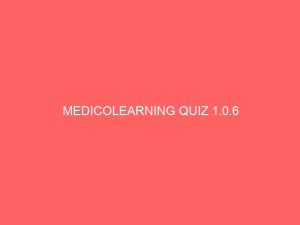Results

#1. This 61-year-old man presented with abdominal pain. Basophilic stippling was evident on a blood smear. What is the most likely diagnosis?
Chronic lead poisoning was the diagnosis in this case. Lead poisoning is associated with abdominal pain, blue discoloration of the gums, and basophilic stippling.

#2. What diagnosis explains the combination of findings on this lateral chest radiograph?
The lateral chest radiograph shows complete left atrial calcification. In combination with the Starr Edwards mitral prosthesis, the most likely diagnosis is rheumatic heart disease.

#3. This 9-year-old boy presented with a two-day history of right shoulder pain after an upper respiratory tract infection. What is the cause of the abnormality demonstrated?
Weakness or paralysis of the serratus anterior due to palsy of the long thoracic nerve is a common cause of a winged scapula.

#4. What diagnosis is suggested by this radiograph taken following a barium swallow?
The barium swallow radiograph demonstrates a large Zenker’s diverticulum.

#5. A 70-year-old man presented with weight loss and hemoptysis. Multiple painless cutaneous nodules had developed over several weeks. What is the most likely diagnosis?
An endobronchial tumor was recognized on flexible bronchoscopy. Cutaneous and bronchial biopsies were positive for small-cell lung cancer.

#6. This 68-year-old woman presented with hair growth and a sore furrowed tongue. What is the most likely diagnosis?
Acquired hypertrichosis lanuginosa is a rare disorder of abnormal and excessive growth of fine lanugo hair, most often associated with an internal malignancy.

#7. A 55-year-old kidney-transplant recipient presented with headache and fever. The cerebrospinal fluid contained 84 percent neutrophils. What is the most likely diagnosis?
Nocardia asteroides infection typically presents with an abscess or multiple enhancing lesions, with neutrophilic pleocytosis in the cerebrospinal fluid.

#8. This patient presented with an S4 gallop, an elevated jugular venous pressure, and bilateral pitting edema. What diagnosis is most likely?
Congestive heart failure is one of the causes of acquired leukonychia totalis.

#9. What diagnosis is suggested?
Sweating over the site of a resected parotid can indicate Frey’s syndrome.

#10. Treatment with which antihypertensive is most likely to cause this appearance?
Angioedema of the tongue is most associated with treatment with an angiotensin converting-enzyme inhibitor.





